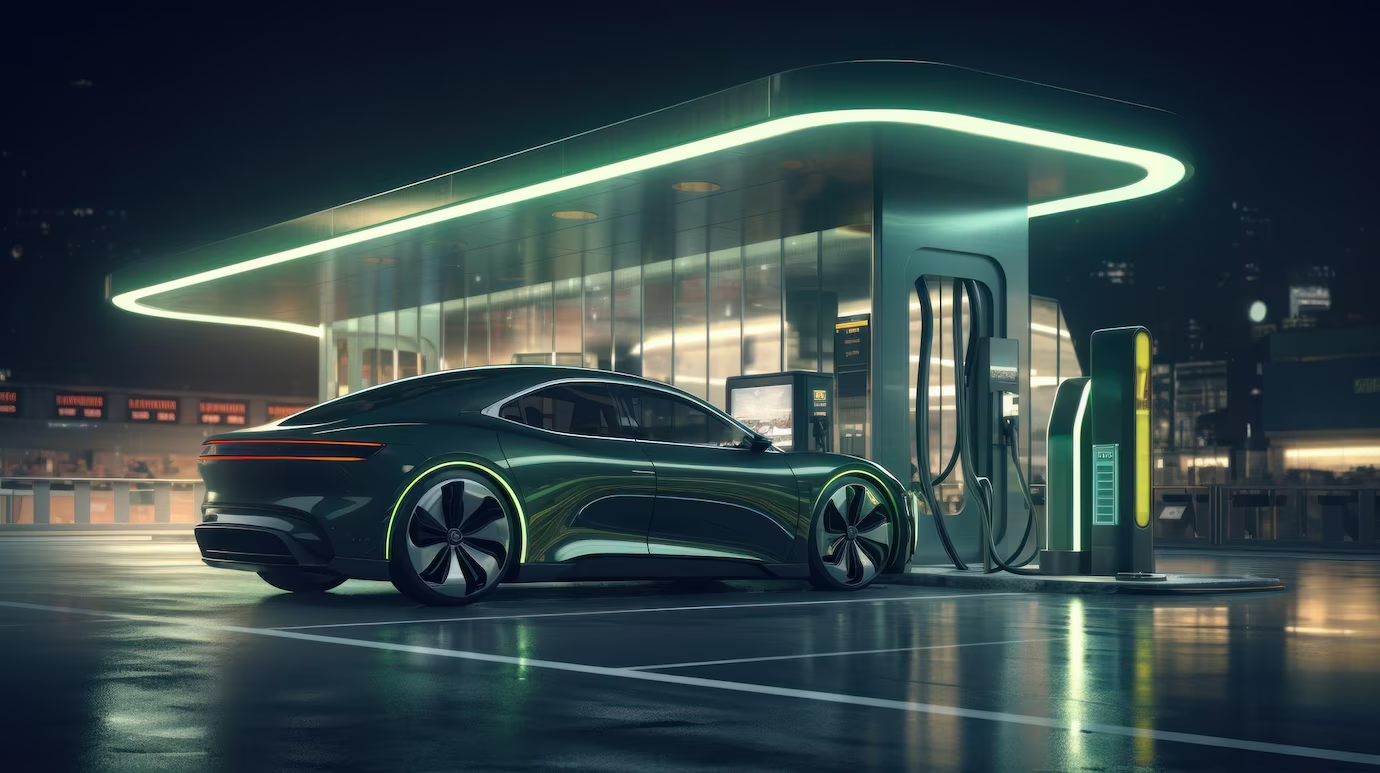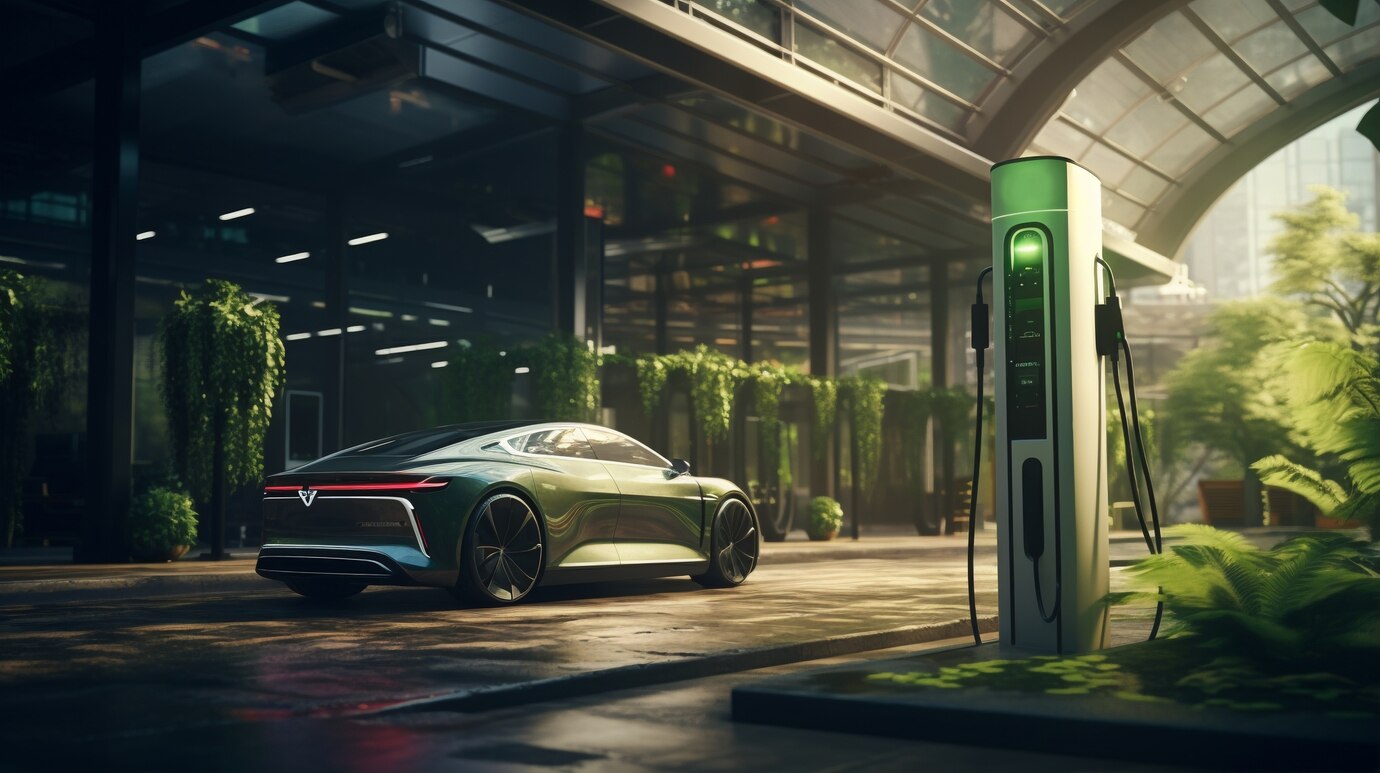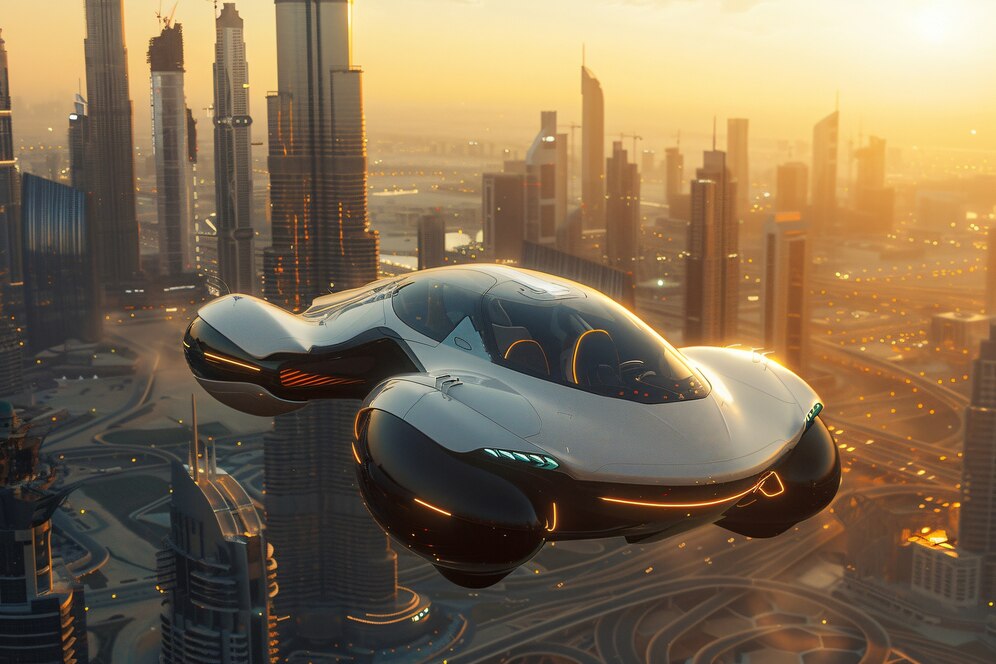introduction
The automotive industry is undergoing a monumental shift, and at the heart of this transformation lies electric vehicles (EVs). From their humble beginnings to becoming the driving force of the future, electric cars have moved from a niche market to a mainstream revolution. Today, we are standing at the precipice of a new era—one where the future rolls electric. This transition is not just a technological advancement but a profound change in how we view transportation, energy, and sustainability.The phrase “The Future Rolls Electric” represents more than just a trend—it signals the dawn of a new chapter in the automotive world, one that promises cleaner, smarter, and more efficient vehicles that align with the needs of a rapidly changing world.

Revolutionizing Transportation: The Electric Shift
For over a century, the internal combustion engine (ICE) has reigned supreme, powering the vast majority of vehicles on the road. However, the limitations of fossil fuels, the rise of environmental awareness, and technological advancements have sparked the rise of electric mobility. As we move towards a more sustainable future, the shift to electric vehicles is becoming inevitable.
Why Electric?
Environmental Impact: One of the most compelling reasons to switch to electric vehicles is the drastic reduction in carbon emissions. EVs produce zero tailpipe emissions, which helps combat air pollution and reduces our overall carbon footprint. This is a crucial step toward mitigating climate change and creating healthier, more sustainable cities.
Energy Efficiency: Electric motors are inherently more efficient than gasoline engines. A typical EV converts around 85-90% of the electrical energy from the grid to power the wheels, compared to about 20-30% for a conventional gasoline engine. This high efficiency means better energy use and lower operating costs for consumers.
Sustainability: With the increasing availability of renewable energy sources like solar, wind, and hydropower, electric vehicles can be charged using clean energy, making them a key player in reducing reliance on fossil fuels and enhancing energy security.
The Driving Experience: Smooth, Quiet, and Powerful
When it comes to the driving experience, electric vehicles offer a stark contrast to traditional gasoline-powered cars. Instead of the roar of an engine and the clunk of gears shifting, EVs are characterized by their smooth, silent, and powerful performance. The electric motor provides instant torque, resulting in quick acceleration and a seamless driving experience.
Key Features of the Electric Drive:
Instant Torque: One of the most thrilling aspects of electric vehicles is their ability to provide instant torque, meaning they can accelerate smoothly and quickly without the need for gear shifts. Whether you’re at a stoplight or merging onto the freeway, the power delivery is immediate, providing a smooth and responsive ride.
Silence on the Road: Electric cars operate almost silently, which significantly reduces noise pollution in urban environments. This not only enhances the driving experience but also contributes to quieter, more peaceful cities.
Regenerative Braking: Unlike traditional vehicles, EVs often come equipped with regenerative braking systems. This allows the car to convert kinetic energy back into stored energy in the battery, improving efficiency and extending the driving range. It also provides a unique driving experience, where drivers can adjust their speed and deceleration with minimal use of the brake pedal.
Advanced Suspension and Handling: Electric vehicles often have a low center of gravity due to the placement of heavy batteries at the base of the car. This enhances handling and stability, providing a more balanced and comfortable ride, especially on winding roads or tight corners.
Cutting-Edge Technology: The Smart Vehicle Revolution
Electric vehicles are not just about sustainability and performance—they are also hubs of cutting-edge technology. As the automotive industry embraces the electric future, vehicles are becoming more intelligent, connected, and autonomous. The integration of smart technologies into electric vehicles is changing the way we interact with our cars and the roads.
The Digital Evolution of EVs:
Autonomous Driving: One of the most exciting developments in the electric vehicle space is the advent of autonomous driving technology. Many electric cars are being equipped with advanced driver-assist systems (ADAS), including features like lane-keeping assist, adaptive cruise control, and automatic emergency braking. As AI and machine learning continue to evolve, we can expect fully autonomous electric vehicles to become a reality in the near future.
Connected Cars: Electric vehicles are also part of the broader Internet of Things (IoT) ecosystem. Through advanced connectivity features, EVs allow drivers to interact with their cars in innovative ways. From remote control of vehicle settings to real-time diagnostics and updates, connected cars are making car ownership more convenient and user-friendly.
Smart Charging: The future of electric vehicles is also about smart charging. With apps and smart charging stations, EV owners can schedule charging times, monitor battery levels, and even optimize energy consumption to save on costs. In some cases, cars can even communicate with the grid to help manage energy flow during peak usage times.
Overcoming Barriers: Range, Charging, and Infrastructure
While the future of electric mobility is undoubtedly bright, there are still challenges to overcome before EVs can completely replace gasoline-powered cars. These challenges primarily revolve around range anxiety, charging infrastructure, and the cost of EVs.
Addressing the Challenges:
Range Anxiety: One of the biggest concerns for potential EV buyers is range anxiety—the fear that their car will run out of charge before reaching a charging station. However, this is changing rapidly. Battery technology is improving, with many electric vehicles now offering ranges that exceed 250 miles on a single charge. Some premium models even offer ranges of over 350 miles.
Charging Infrastructure: The availability of charging stations is critical to the widespread adoption of electric vehicles. Fortunately, both public and private sectors are investing heavily in expanding the charging infrastructure. Fast-charging networks are sprouting up around the world, allowing drivers to recharge their vehicles in a matter of minutes rather than hours.
Cost of Electric Vehicles: While EVs were once considered prohibitively expensive, this is no longer the case. As battery prices continue to fall and manufacturing processes improve, the cost of electric vehicles is steadily decreasing. Many governments also offer incentives and tax credits to make EVs more affordable for consumers.
The Road Ahead: A Global Shift Toward Electric Mobility
The shift to electric vehicles is not just a trend; it is a global movement. Governments, automakers, and consumers are all recognizing the importance of moving away from fossil fuels and embracing cleaner, greener alternatives. From Europe’s ambitious EV targets to China’s rapidly growing electric vehicle market, the world is waking up to the need for sustainable transportation solutions.
The Global Impact of Electric Mobility:
Government Initiatives: Many countries have set ambitious targets for phasing out fossil fuel-powered vehicles. For example, the European Union plans to reduce CO2 emissions by 55% by 2030 and aims for a total transition to electric vehicles by 2035. Similarly, China has implemented policies to encourage EV adoption, making it the largest electric vehicle market in the world.
Automaker Commitment: Leading automakers, including Tesla, BMW, Volkswagen, and General Motors, are all heavily investing in electric mobility. Many of these companies are already producing or planning to produce a full lineup of electric vehicles in the coming years, signaling a major shift in the automotive industry.
A Greener Future: The global shift to electric vehicles will help reduce our dependence on fossil fuels and lower global emissions. It will also stimulate the growth of green energy industries, providing a cleaner, more sustainable future for generations to come.

Conclusion:
The phrase “The Future Rolls Electric” is not just a catchy slogan—it is a reality that is unfolding before our eyes. The future of transportation is electric, and it’s already here. With cleaner, more efficient, and technologically advanced vehicles, electric mobility is transforming the way we drive, live, and think about transportation.As more consumers, automakers, and governments embrace this shift, the future of driving will be defined by the principles of sustainability, efficiency, and innovation. Whether you’re driving through city streets or cruising down the highway, the future of mobility has already arrived, and it’s electric. The road ahead is bright, and it rolls toward a cleaner, greener, and more exciting future.


1 thought on “The Future Rolls Electric: A New Era of Driving”